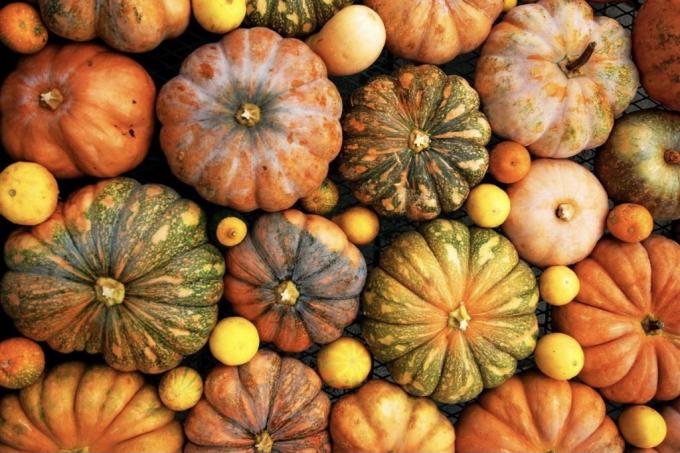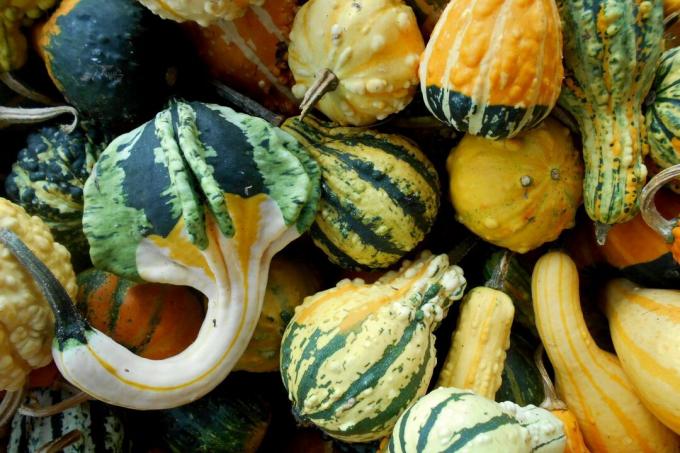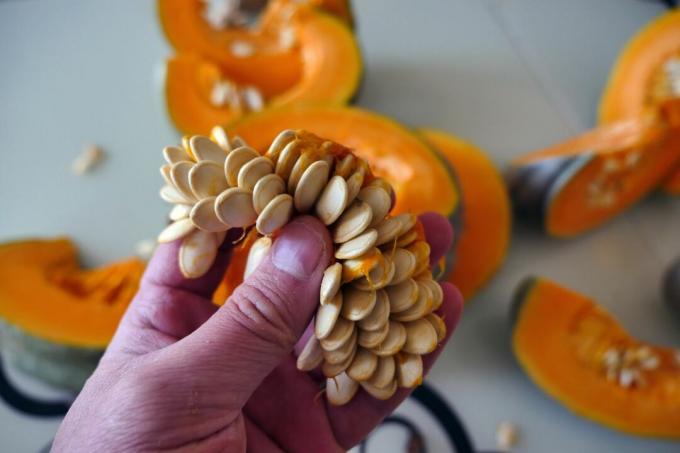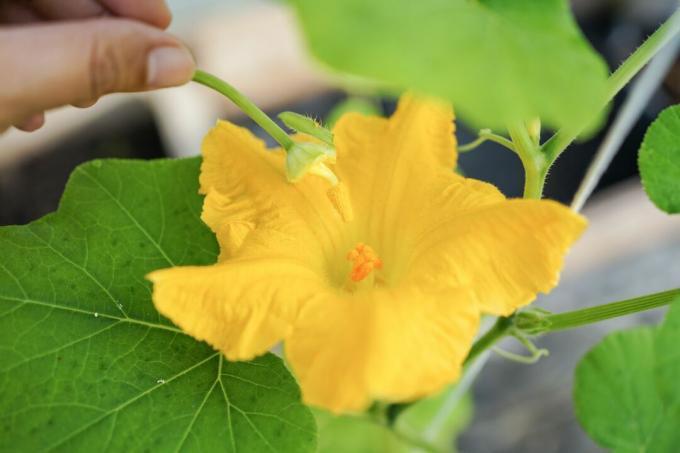Again and again there are reports of poisoning with bitter gourd fruits. We explain how the bitter substances get into the pumpkin and how dangerous they are.

From sweet and mild to very nutty aromas - the pumpkin tastes incredibly good. And especially in the cold months, the warming pumpkin dishes are an integral part of our menu. However, you should be careful about which pumpkin you choose to eat.
"Contents"
- Poisonous Gourds: Are Bitter Gourds Dangerous?
- Poisonous pumpkin varieties: Which pumpkins are poisonous?
- Pumpkins without bitter substances
Poisonous Gourds: Are Bitter Gourds Dangerous?
The shortest answer to this question is: Yes, very bitter tasting pumpkins are poisonous and should not be eaten under any circumstances. All family members of the cucurbit family (Cucurbitaceae) – such as squash (Cucurbita maxima, C moschata & C pepo), zucchini (Cucurbita pepo subsp. pepo convar. giromontiina
) and cucumber (Cucumis sativus) – can contain bitter substances that are dangerous for humans. These so-called cucurbitacins occur naturally in the original forms of our pumpkins and cucumbers. If fruits containing high levels of cucurbitacine bitter substances are eaten, the human body reacts with typical symptoms of poisoning such as nausea, vomiting and diarrhea. There have also been deaths. A pensioner ate very bitter zucchini in a casserole in 2015 and tragically died as a result. Therefore, it is very important that you never eat pumpkin, courgettes, etc. with a distinctly bitter taste!
If you have already eaten a bitter, poisonous pumpkin, higher amounts of bitter substances will quickly lead to nausea, vomiting and intestinal problems. As with many gastrointestinal disorders, if symptoms persist, dangerous dehydration can occur. If you experience more severe symptoms after eating bitter gourds, you should definitely consult a doctor.
Poisonous pumpkin varieties: Which pumpkins are poisonous?
In many years of breeding work, humans have been able to select variants that are free of bitter substances and to multiply them further. With certified seeds from professional propagation, it is almost impossible for a bitter gourd to develop. However, it happens in nature that the decisive genes for the bitter substances reappear in the next generation as a result of reverse mutations or crosses with wild varieties. Pumpkin plants prefer cross-pollination, which of course leads to crossbreeding of different varieties particularly quickly, unless this is prevented by suitable breeding methods.

garden pumpkins like butternut, Musk Squash and Hokkaido from certified seeds can basically be grown and enjoyed without any problems. As already mentioned, bitter substances cannot be excluded 100% here either. As soon as the squash tastes bitter, just leave it alone. At the slightest sign, we would always recommend not eating the fruit and spitting out the bitter bit immediately.
notice: In exceptional cases, you can also find pumpkins with cucurbitacin - such as bitter Hokkaido pumpkins - in the supermarket, although the growers use certified seeds. The pumpkin is a natural product in which spontaneous reverse mutations or non-pure, crossed seeds can never be completely ruled out.
Certain subspecies and varieties, which are summarized under the name "ornamental pumpkin", are generally not suitable for consumption.

Pumpkins without bitter substances
Despite the danger of bitter cucurbitacins, you can safely grow pumpkins and cucurbits in your own garden if you follow a few basic rules:
Seeds that you purchase are likely to be safe. Of course, professional growers know about the problems of the cucurbits and use appropriate methods accordingly. Nevertheless, even with purchased seeds, random mutations can lead to a functioning seed again and again bitter substance synthesis - the blame for this does not necessarily lie with the grower, but with the mother Nature. She definitely provided for constant mutations in the genome.

Ornamental gourds are generally not suitable for consumption. They were not primarily bred for consumption, but as an ornament and therefore often contain the dangerous bitter substances, which under no circumstances get into the human organism in large quantities should. Decorative pumpkins are perfect for autumn decorations, but they are not suitable for the kitchen. However, ornamental gourds are usually so hard when ripe that you can hardly cut them with a kitchen knife. An exception are the flat-topped, ribbed patties, which are eaten young and soft like courgettes and used as ornamental pumpkins when hard and ripe. However, if you are not sure whether you have an edible decorative pumpkin in front of you, it is better to use it only for decoration.
Severe stress on plants can also lead to bitter fruit. This applies in particular to varieties in which the synthesis of bitter substances was not interrupted by breeding, but only down-regulated. Pest infestations, drought, pruning measures or heat stress can therefore give pumpkins and cucurbits a bitter taste.

Be careful when propagating your own pumpkin seeds. Ornamental squashes and edible squashes can be grown next to each other in the garden without any problems. The danger of bitter substances only lies in the next generation, i.e. when you harvest seeds from the freely pollinated pumpkins and plant them in the following year. In most cases of poisoning with a bitter-tasting pumpkin or zucchino, the plants were simply freely pollinated by insects. In order to be able to harvest seeds that are very likely to be safe and to win non-bitter gourds from them the following year, you have to Protect one or more female flowers from pollination by tying them before opening close. In this way, no insect can get to the stigma to pollinate. When the flower is fully developed, go into a male flower with a clean brush, open the female flower and transfer the pollen by hand. Then close the female flower again. Mark the pollinated flower and use only the seed from the fruit that has developed here for further propagation.
The variety of colors and shapes of the pumpkins is enormous. In our variety article you will find an overview of the most diverse Pumpkin types and varieties.
